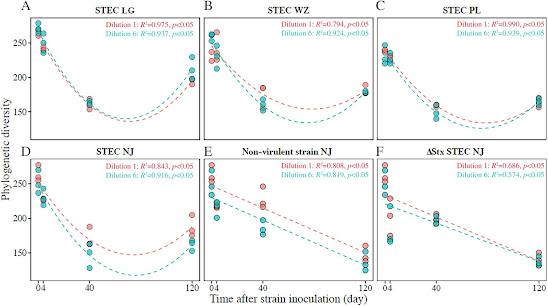By: Jaime Vargas
Microbial communities in soil depend on diversity to survive. Such diversity must be maintained, yet it can be difficult to maintain due to the everchanging nature of environments. A change in environments can be invasive bacteria that can leave a mark on native soil communities. A study by Xing et. al. in 2021 investigated the effects on microbial communities being invaded by three strains of E. Coli. The study used four different soil samples from China and had the three strains of E. Coli inoculated into these samples. E. Coli was chosen for this experiment as it can easily travel to different environments via the intestinal system of many animals (including humans). The results of the study demonstrated that the addition of E. Coli to the soil samples lead to a decrease in species richness. The decrease was more prominent based on the ability of the invader to survive in the new ecosystem. Some samples demonstrated that they could increase their species richness after a long time, while others continued to lose their diversity. The decrease in diversity lead to changes in the structure and functionality of the entire microbial community as the composition of microbes interacting in the soil changed. This study demonstrates that more research on the effects of invasive bacteria on soil communities must be extended to understand the changes done to soil microbial communities.
Reference:
Xing, J., Jia, X., Wang, H., Ma, B., Salles, J. F., & Xu, J. (2021). The legacy of bacterial invasions on soil native communities. Environmental Microbiology, 23(2), 669–681.

No comments:
Post a Comment